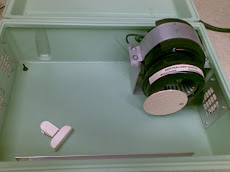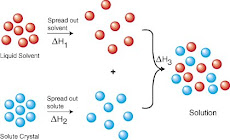The Science of Cleaning
Embracing and implementing cleaning science can improve training, reduce budgets and propel the industry into the future
By Ronnie Garrett
Email the HS editors
COMMENTS ON THIS NEW CONCEPT TAKEN FROM "CLEAN LINK"
9/22/2011
When the science of cleaning comes up, the first comment out of many custodial managers' mouths is: "I don't have time for that."
And in an industry plagued by tightened budgets and labor shortages, it is hard to imagine having the time to measure soil load, then clean and measure the results, let alone analyze the data and implement changes.
Allen Rathey, president of InstructionLink/JanTrain Inc., Boise, Idaho, admits the industry doesn't have a lot of time to do this, but he is quick to add "we don't have time not to."
He emphasizes the importance of cleaning science with the following analogy: "You're rowing a boat that has a hole in the bottom and is filling up with water. There are alligators chomping at the sides and you're trying to row the boat and bail water at the same time. You don't have time to do any of those things, but you have to do all of them to get to where you're going."
Rathey explains embracing cleaning science practices and implementing them into custodial operations provides momentum that will propel the cleaning industry into the future.
"We want to be making money, using our time wisely and cleaning for health; and cleaning science is the only way to get us there," he says.
Cleaning at its most basic level is the process of removing unwanted substances from the environment. Traditionally that has meant clearing away the dirt people can see, but today it means much more.
"It's also removing the things we can't see: the microbial contaminants, chemical residues, bio- or chemical pollutants," says Rathey. "The old expression, ‘What you can't see can hurt you,' definitely applies to the science of cleaning, which is removing unwanted and invisible things that can adversely affect our health."
Start At The Very Beginning
In order to implement cleaning science into custodial operations, cleaning professionals must first learn to identify the unseen.
"Fortunately, innovations in health care and clean room environments have helped define what those invisible particles are, how to remove them and how to keep them out," Rathey says.
Once identified, cleaning professionals need to know how much of these contaminants exist in the cleaning environment. According to Dave Frank, president of the American Institute for Cleaning Sciences, Highlands Ranch, Colo., custodial operations can employ 10 different instruments to measure cleaning efficacy, including: the ATP device, which measures Adenosine Triphosphate; air quality sampling tools; and ultraviolet light testing.
These tools can be used in a variety of ways. For instance, cleaners can use ATP meters to identify germ hotspots then provide surface wipes and hand sanitizer stations to empower employees to help keep those areas clean. The same ATP meter can be used again after cleaning is complete.
"This helps determine if you've left any organic material on the surface," Rathey says. "Microbes grow on organic matter. If you remove the food supply, then you theoretically remove the microbes."
Just like the ATP device can measure matter on surfaces, particle counters measure airborne particles, which can resettle on surfaces, clog HVAC systems or be breathed in by building occupants. This tool can be used in a number of ways. For instance, it might measure contaminants in the air before and after vacuuming to determine how well a vacuum contains dust.
And because urine fluoresces, custodians might utilize an ultraviolet light to detect urine deposits in restrooms, along grout lines and so on.
"You can literally see the contaminants that are not being removed," Rathey says.
These tools help move custodial operations beyond subjective observations — such as looking at a room's appearance and judging it clean — to objective measurements, which provide information that can be used to develop best practices and ensure cleaners remove both seen and unseen contaminants.
However, properly implementing cleaning science programs hinges on management's understanding of them, adds Frank, who points out "I can't measure what I can't manage. It's management first and measurement second."
Rathey agrees stating, "We'd love to see everyone measuring, but we can't do that because everyone doesn't know how." Cleaning managers must be trained to take measurements correctly. "Once you've been trained, your measurements are going to be standard from test to test, and you'll get consistent and reliable results," he says.
Management also needs to focus on documenting the results consistently and accurately over time. The data should be kept in one place for future analysis in order to demonstrate that a particular chemical, tool or process cleans better over time.
Solution To A Problem
"Cleaning science is a solution looking for a problem," says Frank, who believes these measurements should be taken to implement a quality assurance program and build custodial training, and nothing more.
"The measurements need to be tied to a specific outcome," he explains. "We should not be measuring whether or not the surface is dirty, but the workers understanding of what they are doing. I can have the best products in the world but if the custodian doesn't know how to use them, what good are they? What am I really measuring?"
Measurements then can be used to identify and fill gaps in worker training. Let's say a hospital trains a worker to clean patient rooms. After he's cleaned, his supervisor measures the room and gets poor readings. At this point the supervisor can provide remedial training. The supervisor then measures a second time to measure progress.
"What we're measuring is not whether or not the surface is dirty but the workers understanding of what they are doing and whether or not they are doing it correctly," Frank explains.
Measurements may also be used to compare the efficacy of processes and equipment, says Rathey. For instance, an organization considering adding restroom cleaning equipment might first mop the floor, taking before and after measurements with an ATP tool, then clean the floor using the equipment, taking before and after measurements. The custodial operation can compare the results from the two tests to determine the ideal cleaning option.
Frank stresses it is important to remember product incompatibility and other factors can trigger false readings and to take these factors into account when analyzing data. For instance, bio-based cleaning chemicals leave a film behind that prompts a false reading. Measuring three hours after an area has been cleaned is also inaccurate.
Direct And Indirect Benefits
The idea behind cleaning science measurements is to come up with the most productive and effective means of cleaning. Cleaning science looks at soil removal over time.
By testing before and after cleaning, custodial operations can pinpoint processes and equipment that clean well in less time, which can boost productivity and reduce labor costs. For example, a process that puts less dust into the air directly impacts labor needs, because less follow-up dusting will be required.
For instance, "if you use microfiber instead of cotton rags, you're using a better process, which cleans better and is more effective because it kicks less dust into the air," Rathey says. "How do you know? Your measurements will tell you. Plus, with less dust in the air you can dust three days a week instead of five. The amount of time to clean with a cotton cloth and a microfiber cloth is the same, but the soil removal over time is much higher with microfiber."
Indirect benefits exist as well. A program measuring allergens in the environment might be correlated to lower allergy rates among building occupants.
"The power of those measurements over time is enormous," says Rathey. "If I show that I lowered the allergen rate in a school, for instance, I'm affecting attendance. In an office environment I'm affecting how many people have allergic reactions."
That being said, Frank advises custodial operations proceed with caution.
"You can't run around saying the building isn't clean. We already know that," he says. "The question is: ‘How are you going to resolve it?' That comes back to quality assurance and custodial training."
He recommends implementing cleaning science practices while adhering to the recommendations of ISSA's CIMS standard, which addresses quality assurance and measurement, as well as technical training.
Cleaning science programs, Frank adds, may not be a good fit for everyone. He believes healthcare facilities and single-tenant buildings will see the greatest return on investment (ROI).
"Every building could use this, but it will cost the average building between $10,000 and $20,000 to get started," he says. "This program has to go into an area where there is a strong ROI."
That being said, Rathey stresses the more custodial operations get involved in cleaning science programs, the better chance there is to raise the professionalism of the industry and the public's perception of cleaning professionals.
"The real underpinning of cleaning science is that it will help us be viewed as more than just ‘mop jockeys,' " he says. "This isn't a quick fix but rather a path to success."
Ronnie Garrett is a freelance writer based in Fort Atkinson, Wis.
martes, 31 de enero de 2012
THE SCIENCE OF CLEANING
viernes, 27 de enero de 2012
Removing Graffiti With Biobased Cleaners
Certain plants provide strong solvents that can replace traditional chemicals in tough cleaning applications. One of the toughest cleaning jobs is graffiti removal. Most graffiti is done with solvent or petroleum-based paints; for years, petroleum- or chloride-based cleaners were used to clean them.
But biobased graffiti removers, which contain soy, corn or citrus derivatives, are touted because they are biodegradable, safer for workers to handle and wash clean away with water. These products perform comparably to traditional removers but leave less of an impact on people and the environment. They can also remove stains from pens, markers and other inks. FROM CLEAN LINK
Removing Graffiti With Biobased Cleaners
Certain plants provide strong solvents that can replace traditional chemicals in tough cleaning applications. One of the toughest cleaning jobs is graffiti removal. Most graffiti is done with solvent or petroleum-based paints; for years, petroleum- or chloride-based cleaners were used to clean them.
But biobased graffiti removers, which contain soy, corn or citrus derivatives, are touted because they are biodegradable, safer for workers to handle and wash clean away with water. These products perform comparably to traditional removers but leave less of an impact on people and the environment. They can also remove stains from pens, markers and other inks. FROM CLEAN LINK
miércoles, 25 de enero de 2012
BIOCIDES IN EVERY DAY PLASTICS
What are Biocides?
Commercial biocides are composed, necessarily of one or several active chemical(s), and possibly a liquid, pasty or solid carrier, leading to a solution, dispersion or masterbatch.
Biocides must achieve a tricky balance of:
Bio-activity (of course) versus bacteria, fungi, algae
Controlled compatibility with the polymer host leading to suitable migration and leachability
Suitable thermal stability allowing to withstand processing and service life temperatures
Non damaging effects on the polymer end-properties: sensorial, mechanical, electrical, ageing, failure behaviour, light and heat stability
Human safety: absence of toxic, allergenic and irritating reactions of the skin
Environment safety
Cost effectiveness
If relevant, US FDA, US EPA, Eu-BPD, REACH, US FIFRA (Federal Insecticide, Fungicide and Rodenticide Act), NSF (US National Science Foundation) etc. registered, notified and ⁄ or compliant.
Active bases, very diversified, can be sliced in:
Organic antimicrobials that can be synthesized or derived from naturally occurring sources. Examples of organic antimicrobial technologies include triclosan, quaternary ammonium compounds, Octyl-4-isothiazolin-3-one (OIT)
Inorganic antimicrobials based on alkali, alkaline, transition block and metalloid elements. Examples of inorganic antimicrobial technologies include silver and copper.
Organometallic antimicrobials containing both organic and inorganic components in their structures. Oxybisphenoxyarsine (OBPA), zinc pyrithione are examples.
The liquid carriers include plasticizers such as phthalates, epoxidized soybean oil (ESBO) and epoxidized ester (Lankroflex by Akcros); and water or chemicals such as glycolic solutions (dipropylene glycol etc.), alkaline solutions.
Introduction
Bacteria, fungi and algae can affect the aesthetic and physical properties of a plastic or a rubber by causing black spotting or discoloration, pink staining, odor and polymer degradation, fouling etc. Biocides used to fight these microorganisms have two main roles:
To stop bacteria or fungi degrading the polymer's physical and sensorial properties, reduce microbe populations both within the material and at the surface. The growth of microorganisms can lead to unpleasant odors, surface and bulk degradations. Reducing odors is a goal for applications such as clothing, shoes, waste containers etc.
To prevent the build-up of harmful bacteria increasing the risk of contamination and transmission of infections for humans. Biocides act as a complementary technique for cleaning, which is also simplified and less costly.
After 'Research and Markets' the market for biocides in plastics had soared to $145m (€113m) in 2005 that is to say a significant rise of 40% since 1995. Traditional biocides are being replaced by more environment-friendly biocides also more expensive. For example, European sales of biocidal additives for the plastics and resins market are expected to grow by 5% over the next five years, with:
Silver-based actives growing by 10% annually ('Kline & Company')
Non-arsenic based formulations rising at 10-20% per year
Most demanding sectors are food processing plants, hospitals, care homes offering an ideal environment for microbes, and the incorporation of biocides in plastics and rubbers helping reduce time and money consuming cleaning. The rich panel of active biocides and their combinations allow their use in all the polymers such as, for example emulsions, solutions, dispersions, latices, solid polymers processed by injection moulding, dip moulding, blow moulding, rotational moulding, profile and tube extrusion, film, blown films, extruded films, sheets, calendering, fiber spinning, gel-coats and powder coatings, WPC, adhesives, low-VOC water-based paints and coatings.
After PVC, the biocides now concern all the commodities and other polymers such as, for example, ultra high molecular weight polyethylene (UHMWPE), high density polyethylene (HDPE), polypropylene (PP), PTFE, polyurethane, polystyrene (PS), Nylons (PA), polycarbonate (PC), acetals (POM), polyesters (PET and PBT), ABS, rubbers, thermoset resins. The patent registration concerning antimicrobials shows the increasing interest for antimicrobial fight. The linear increase leads to more than a tripling between 1990 and 2010 as we can see on Figure 'Antimicrobial-Patents'.
Natural Sourced Biocides
Cu+, Ag+, Zn2+ and Ba2+ Boost Antimicrobial Activity of PA66
C. Citterio, L. Mercante, M. Rodighiero, K. Brocchini; Lati Industria Termoplastici S.p.A., (INNOVATIVE ANTIMICROBIAL THERMOPLASTIC COMPOSITIONS) study the effects of several natural microbiocides on a 50% glass reinforced polyamide 66 (PA 66). Involved bacterial species are Staphylococcus aureus and Escherichia coli.
Antimicrobials are based on:
Cu+
Silver, Ag+, a well-known antimicrobial agent acting on the cell wall
Zinc salt
Barium salts
Bismuth
Wood flour
Sorbic acid derivatives
For the four strongest biocides, Table 2 displays the actual concentrations (inferior to 1%), the antimicrobial activity (expressed in log values) and the percent of impact strength versus impact strength of the blank.
Silver is confirmed effective in PA. The used commercial preparation is found successful even at low Ag+ concentration due to its dispersion on the support and the synergistic effect of zinc.
Additives based on Copper (I) were found valid alternative to Silver based ones in polyamides, with the advantage to have a better cost/performance ratio. Copper as antimicrobial agent is recognized by the US Environmental Protection Agency. Furthermore, Cu (I) is listed in Directive 2002 ⁄ 72 ⁄ EC and following amendments to be safely used in food contact applications.
Where Copper and Silver cannot be exploited, other valid alternatives such as Zinc and Barium salts can be used without detrimental effect on the main features of the thermoplastics, although a higher loading level is necessary. Further investigations should be conducted on the duration of the antimicrobial action, although the duration of in-mass additives is much longer than a surface treatment.
New Ways for Old Issues
The main technical problems are related to the persistence of the anti-microbial effect by using persistent additives such as silver or nano-sized mineral derivatives, organic oligomers, and grafted polymers.
Application of Silver Derivatives into Rubber Goods
Effective biocides based on silver ion-exchange resins are deactivated by reaction of silver ions with the sulphur or sulphur-based accelerators. To avoid this drawback G.R. HAAS and ALL (ACS Rubber Division, October 2001, paper 28) study the behaviour of two silver ion-exchange resins (Ag1 and Ag2) in EPDM cured with peroxides. After exposure up to 30 days at Aspergillus Niger (AN) or a mixture (Mixt) of fungi, the growth varies from traces (rating 0) for the compounds containing silver up to more than 60% (rating 4) for the controls without biocide.
Figure 6: Antifungal Activity
Nano-sized Titanium Dioxide
Nano-sized titanium dioxide leads to photo-catalytic reactions preventing the build-up of harmful bacteria and killing existing microorganisms on the surface of polymer parts and goods. Titanium dioxide, mineral and chemically stable, does not deteriorate and it shows a long-term anti-bacterial effect. Nano-sized particles are particularly active justifying their use in coatings.
Self-spreading Ionic Silicone Oligomers
R.R. PANT and ALL (J. of Applied Polymer Science, 104, 2007, p. 2954) study ionic silicone oligomers functionalized with alkylammonium chloride groups assuming two functions:
A more persistent anti-microbial effect thanks to a higher molecular weight
A self-spreading behaviour and a good wetting of a variety of materials allowing to penetrate inaccessible locations
For example, after 1 minute, the diameter of a drop laid on a given surface is about 4 times bigger than that of a low-viscosity oil and the growth of Staphylococcus Aureus is divided by several times after some days.
Functionalized Polymers
O. IGUERB (thesis, Louvain Univ., 2006) photo-graft an acrylate layer on oxidized polyethylene films to obtain an antibacterial effect. The antibacterial activity could be improved by using poly(4-vinylbenzyl chloride) (PVBC) incorporated into poly(n-butyl acryloyloxy ethyl urethane) matrix. Another possibility to obtain antibacterial materials could be the grafting of acrylate monomers containing both acrylic groups and hydrophilic positively charged tertiary amine groups.
Nano-sized Silver Compounds
Nanoco Cy has developed a new biocide called NanoSilver that increases the bactericidal properties of silver thanks to the much larger active surface of nanoparticles. Many food products can have longer use-by dates if they are stored in packaging containing NanoSilver. For example, lettuce stays fresh up to four weeks if wrapped in NanoSilver foil, just like meat, bakery and confectionery goods. In restaurants, biocidal plastic can be used for work surfaces, chopping boards, disposable packaging and dishes. NanoSilver opens up also opportunities for the clothing industry. Garments made with NanoSilver modified fibers can prevent the development of bacteria and the resulting odors.
Keep in Mind the Whole Array of Traditional and Recent Solutions
Arsenic derivatives
Oxybisphenoxyarsine (OBPA) is the most used (more than 50% of the total)
Calcium orthoarsenate
Metal derivatives
Zirconium phosphate-based ceramic ion-exchange resin containing silver
Nanosilver
Zinc Pyrithione (AlphaSan)
Titanium Dioxide Nanoparticles
Zinc pyrithione and N-Butyl-1,2-benzisothiazolin-3-one
Magnesium metaborate
Copper sulphate
Halogen and aromatic derivatives
Triclosan (2,2,4-dicholoro-2-hydroxydiphenyl ether)
2,4,4'-trichloro-2'-hydroxy diphenyl ether
Trichlorophenoxy phenol TCPP
Ortho benzyl para chloro phenol (Chlorophen)
Di chloro meta xylenoI (DCMX)
Ortho phenyl phenate (OPP)
Para chloro meta cresol(PCMC)
Para chIoro meta xylenol (PCMX)
Chlorinated xylenols
2,2-MethyIene-bis (4 chlorophenol) {Dichlorophen}
Sodium salt of Ortho phenyl phenate (SOPP)
Other halogenated compounds
N-Haloalkylthio Compounds
Iodo-Propylbutyl Carbamate (IPBC)
Sulphur Derivatives
Octyl-4-isothiazolin-3-one (OIT)
DCOIT dichloro-octyl isothiazolone
N-(trichloromethyl-thio)phthalamide (Folpet)
Thiazole derivatives
Thiazines, thiazolinones
Bethoxazin (3-Benzo(b)thien-2-yl-5,6-dihydro-1,4,2-oxathiazine 4-oxide)
Isothiazolinones
Benzisothiazolinone
Butyl-benzisothiazolinone (butyl-BIT)
Chlor-methyl and methyl-isothiazolinones
Copper stabilized chlor-methyl and methyl-isothiazolinones
Nitrogen derivatives
1,3,5-Triethylhexahydro-1,3,5-triazine
Hexahydro-1,3,5-tris (hydroxyethyl)-s-triazine
1,3,5-Triethylhexahydro-1,3,5-triazine
Furazoline
Furazolidone
Bromonitropropanediol
Cetylpyridinium chloride
Miscellaneous
Quaternary ammonium compounds
Cationic siloxane
Carbendazim (N-benzimidazol-2-ylcarbamic acid methylester)
Bronopol
Carbendazim
Carboxylic acids
Benzoic acid and salts
Tetrahydro-3,5-dimethyl-1,3,5-thiadiazine-2-thione (Dazomet)
N-3,4-dichlorophenyl-N,N-dimethyl urea (Diuron)
1,6-dihydroxy-2,5-dioxahexane
3-Iodo-2-propynyl butyl carbamate
Methylene-bis-morpholine
Pyrithione
2-(Thiocyanomethylthio) benzothiazole
Tetramethyldithiooxamide
Mixtures
Chlor-methyl isothiazolinones, 1,6-Dihydroxy-2.5-dioxahexane and n-Octyl isothiazolinone
Chlor-methyl isothiazolinones, 1,6-Dihydroxy-2.5-dioxahexane and n-Octyl isothiazolinone and bronopol
Isothiazolinone and bromonitropropanediol
1,6-dihydroxy-2,5-dioxahexane, sodium pyrithione and surfactants
N-(trichloromethyl-thio)phthalamide (Folpet) and isothiazolin
Isothiazolinones and other species such as aldehydes, triazines or quaternary ammonium compounds
Chlor-methyl and methyl-isothiazolinones and 1,6-dihydroxy-2,5-dioxahexane
1,6-dihydroxy-2,5-dioxahexane and chlor-methyl and methyl-isothiazolinones
1,6-dihydroxy-2,5-dioxahexane and isothiazolinones
Sodium salt stabilised aqueous solution of chlor-methyl and methyl-isothiazolinones
Stabilized 1.5% metal-salts free active solution of chlor-methyl and methyl-isothiazolinones
Stabilized 3.0% active solution of chlor-methyl and methyl-isothiazolinones
Benzisothiazolinone, chlor-methyl and methyl-isothiazolinones and dibromo-dicyanobutane
Isothiazolinone and bromonitropropanediol
Hexahydro- 1 3,5-tris (hydroxyethyl)-s-triazine and sodium pyridine thiol-1-oxide
Hexahydro- 1 3,5-tris (hydroxyethyl)-s-triazine and sodium pyridine thiol-1-oxide plus EDTA
Bronopol and chlor-methyl and methyl-isothiazolinones
Benzisothiazolinone and chlor-methyl and methyl-isothiazolinones
Benzimidazole carbamate and n-Octyl isothiazolinone
3-Iodo-2-propynyl butyl carbamate, n-OctyI isothiazolinone and N-3,4-dichlorophenyl- N,N-dimethyl urea
Benzisothiazolinone and Para chloro meta cresol (PCMC) solution
Alkaline solution of Benzisothiazolinone and hexahydrotriazine
Chlor-methyl and methyl-isothiazolinones and bronopol
Benzisothiazolinone and Ortho phenyl phenate solution
TAKEN FROM SPECIALCHEM PUBLICATIONS
viernes, 20 de enero de 2012
POLYMERS AS BACTERIACIDES
Polymeric Materials with Antimicrobial Activity
George Pasternack - Jan 14, 2012
Technical Paper - This article describes the state of the art in the field of antimicrobial polymeric systems during the last decade. Keeping in mind the multitude of existing systems, a classification of the different materials is carried out dividing basically those synthetic polymers that: (a) exhibit antimicrobial activity by themselves; (b) those whose biocidal activity is conferred through their chemical modification; (c) those that incorporate antimicrobial organic compounds with either low or high molecular weight; and (d) those that involve the addition of active inorganic systems. This classification is not absolutely unique and in occasions some described polymeric systems could belong to more than one section. However, the purpose of this review is to provide a handy overall vision of the antimicrobial synthetic polymers world.
More information on: http://www.sciencedirect.com/...
Vistas de página en total
GREEN CHEMICALS
Also the materials have to meet with toxicity and health requirements regarding inhalation, dermal and eye contact. There is also a specific list of materials that are prohibited or restricted from formulations, like ozone-depleting compounds and alkylphenol ethoxylates amongst others. Please go to http://www.greenseal.com/ for complete information on their requirements.
For information on current issues regarding green chemicals, see the blog from the Journalist Doris De Guzman, in the ICIS at: http://www.icis.com/blogs/green-chemicals/.
Certification is an important — and confusing — aspect of green cleaning. Third-party certification is available for products that meet standards set by Green Seal, EcoLogo, Energy Star, the Carpet & Rug Institute and others.
Manufacturers can also hire independent labs to determine whether a product is environmentally preferable and then place the manufacturer’s own eco-logo on the product; this is called self-certification. Finally, some manufacturers label a product with words like “sustainable,” “green,” or “earth friendly” without any third-party verification.
“The fact that there is not a single authoritative standard to go by adds to the confusion,” says Steven L. Mack M.Ed., director of buildings and grounds service for Ohio University, Athens, Ohio.
In www.happi.com of June 2008 edition, there is a report of Natural formulating markets that also emphasises the fact that registration of "green formulas" is very confused at present, due to lack of direction and unification of criteria and that some governmental instittion (in my opinion the EPA) should take part in this very important issue.










































